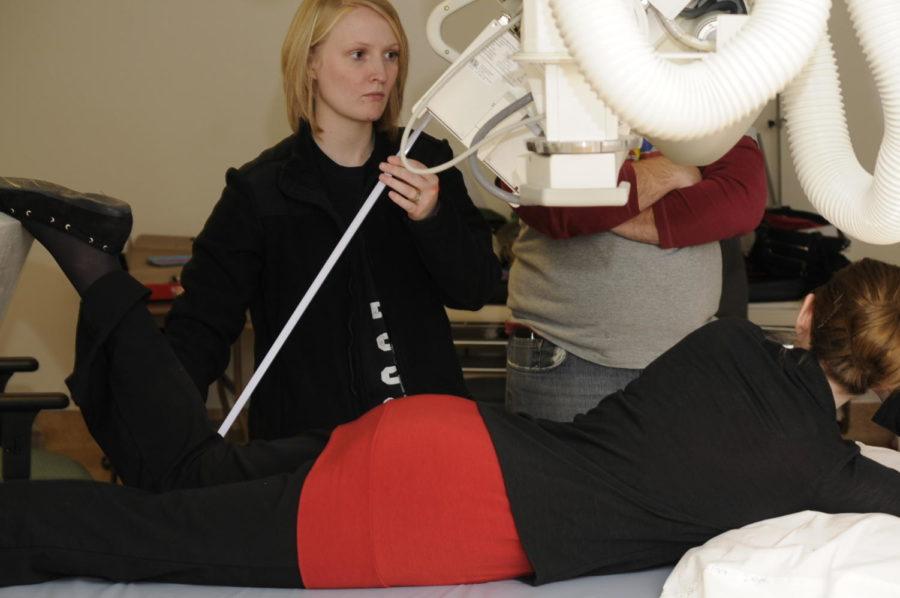A ‘rad’ experience
A ‘rad’ experience
Radiologists use medical technology to see inside the human body using different forms of radiation. It doesn’t take any X-ray machines, though, for students earning a radiology degree at Missouri Southern to see the benefits of the program.
“We’re just getting into the swing of things,” said Angela Abercrombie, freshman radiology major and new to the radiologic technology program. She always wanted to enter into the medical field for a career, and she chose radiology because she has family members in that profession.
The radiology program prepares students for work in hospitals and clinics. The program can be completed by earning an associate’s degree in radiologic technology or an associate/bachelor’s degree in health sciences.
“Our students have to know how the [X-ray] image is acquired, how to position patients to get the proper images, how to operate the X-ray equipment within specifications,” said Alan Schiska, assistant professor of radiology.
The program lasts 24 months and is the first step before getting into deeper radiation-related fields, such as proficiency in magnetic resonance imaging techniques.
The radiology program is one of several now offered in the Health Sciences Building. It joins nursing, dental hygiene, psychology and kinesiology in the newly constructed building.
“We [now] have really state-of-the-art facilities, we have state-of-the-art media; we have windows, which is a big deal,” Schiska said. He also talked the program’s own computer lab and X-ray equipment capable of taking images using radiation, which is similar to what is seen in actual clinics and hospitals. The students feel like they’re getting good experience using the program’s equipment and the area
“I’m really glad I’ve been given the opportunity to help in a clinical environment,” said Shelby Harris, freshman radiology major. “A lot of people don’t get to do that their first year, and we get to do that as freshmen.”
Students can also simulate exams at the school. The students can practice positioning for X-rays on each other, but they can also use synthetic body parts, called “phantoms,” to let students practice.
“We don’t X-ray humans,” Schiska said. “We have what’s called anthropomorphic phantoms that simulate human tissue that we can take X-rays of.”
For students like Harris, the job is going to be something she enjoys because of the people and the places.
“I like working with people,” she said. “The room is spacious, [and] the machinery seems really up-to-date.”
Your donation will support the student journalists of Missouri Southern State University. Your contribution will allow us to purchase equipment and cover our annual website hosting costs.




























